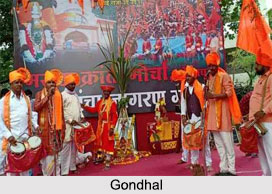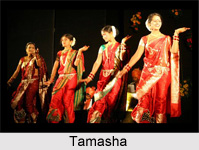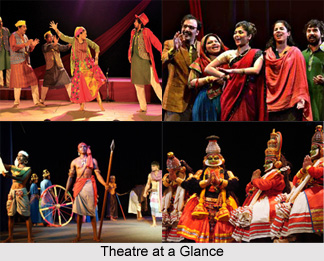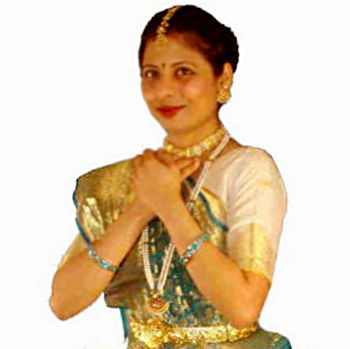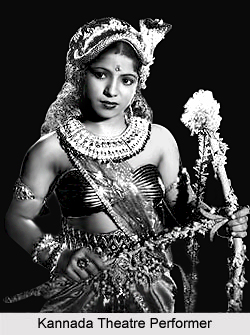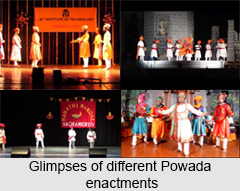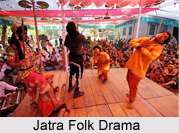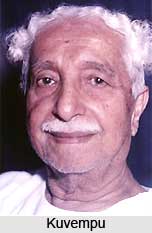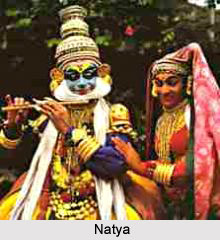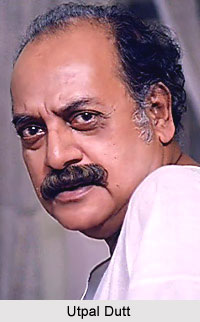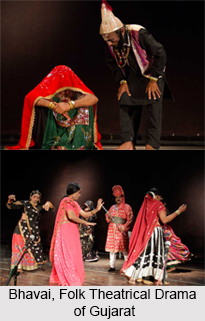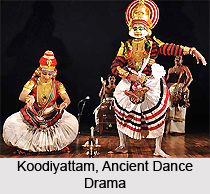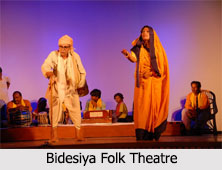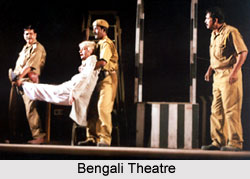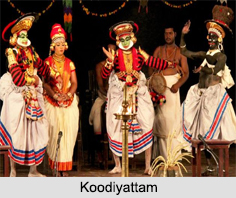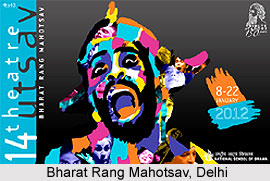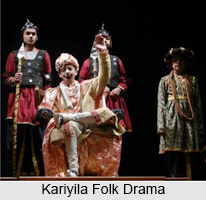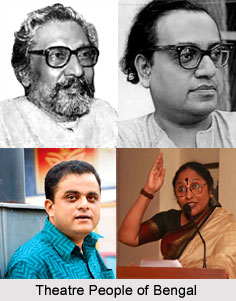Aryan Theatre was located west of the main market in Imphal, in Sagolband. Ryan theatre was established at the residence of Phurailatpam Atombapu Sharma in the year of 1899-1963. He was eminent scholar of Hinduism, Sangeet Natak Akademi award-winner, and first patron of Aryan Theatre. He had a thatch-roof wooden pavilion, which became a centre of religious activities. In September 1935, after prolonged preparations, a makeshift wood and bamboo stage was erected there and Monmohan Roy`s Reziya produced, translated from Bengali by Arambam Dorendrajit in the year 1907-44 staged there. The group got its name from Atombapu`s faith in Aryan culture. Chirom Gouramani in 1914-82 became a household name as Reziya. The personnel of the Aryan theatre were educated and had aristocratic lineage or official employment under the colonial dispensation.
Their early plays consisted of translations from Bengali patriotic, historical, and mythological drama, like D. L. Roy`s Shah jahan, Nisikanta Basu Roy`s Debala Devi or Aparesh Mukhopadhyay`s `Sri Krishna`. The first original work came from Dorendrajit in 1939.this was a semi-historical play titled Bhagyachandra, on the eighteenth-century king who liberated Manipur from the Burmese and introduced Vaishnavism. The political intrigues of eighteenth-century Manipur were highlighted, with traces of Shakespeare in a Lady Macbeth-like character that instigated her husband to fight for the throne. Her husband was Bhagyachandra`s uncle. Khumanthem Madhumangol`s Thoibi in 1946 was the first Manipuri play on a folk theme, i.e. on the legendary princess of Moirang.
After the turmoil of World War II, when the population temporarily abandoned their homes as Allied forces fighting the advancing Japanese occupied Imphal, the group`s elders secured a space on the western outskirts of the main market. A small proscenium arch theatre was constructed with wood, mud plaster, and zinc-sheet roof. The stage was 8 m by 10 m and the auditorium held 400 people. Wooden box seats in the first four rows catered to the elite audience, and the balcony held women and children. Aryan revived Bhagyachandra in honour of Dorendrajit, who had died in 1944. Although still administered by the feudalistic, aristocratic gentry, it admitted to membership all classes, including cadres of the Communist Party, and tentatively attempted to propel its activities toward the left. M. Biramangol, a Communist, who as a young worker had helped in the theatre`s founding, produced Gorky`s Mother in the 1950s. Generally, the clientele was fed with entertainment and gaiety, though the founders` Vaishnava values continued. Hindu mythological plays rubbed shoulders with indigenous folk narratives. A major departure came in the late 1950s with arrogant social melodramas that ridiculed Hindu orthodoxy. Bold depictions of Brahmans, desperate amorous maidens accosting their lovers, songs lifted from popular Hindi films, and all sorts of anarchic, vehement attacks on old values without a corresponding alternative ushered in the new scheme of things. S. Ibomcha Singh wrote excellent parodies. Among them Mahabharata `58 and its sequel Mahabharata `59 were roaring successes. Aryan Theatre produced the largest number of original playwrights in Manipuri theatre between 1945 and 1965.
The other significant event in the late 1950s was the purging of Communist members and admission of a new student theatre group called Amateur Artistes Association. Aribam Syam Sharma in 1939, Arambam Somorendra i.e. Dorendrajit`s son, and others provided the base for subsequent changes. Manipur`s premier educational institution gave them ample leverage in production policies and modernization became the trend. Plays like K. Phulendra`s Sri Sri Krishna Chaitanya in 1958, Syam Sharma`s revision of H. Tomba`s Pidonnu in 1966, and Biramangol`s Sija-laioibi i.e. `Princess-Deity` in 1967 featured excellent imagery and sombre realism. The group produced Shakespeare`s Macbeth translated by Phulendra in 1965, with O. Biramangol, the epitome of sheer melodramatic power, in the lead. Y. Roma matured as an actress under Syam Sharma`s tutelage. From the late 1960s, Aryan Theatre became the springboard for conflict, innovation, and experimentation. Biramangol`s Sanamahi kolu yeikhaiba i.e. Breaking Sanamahi`s Iron Idol` in 1965 symbolized the ant colonial, anti-Hindu sentiment of the times. The believers of the native Sanamahi religion, long suffering the hegemony of Hindu converts, resisted integration with Indian culture, and the movement gained momentum in the 1960s alongside the formation of the All Manipur Students Union and generation of pan-Manipuri, anti-Indian feelings. Depicted with great sentimental flavour, magical production values, and intense melodramatic acting by O. Biramangol as the native sage Khongnangthaba and Syam Sharma as the Hindu missionary Shantidas, the play had a hundred shows in a year and a half. Aryan became the only group that stood for the original culture of the Meiteis. The underdog and the marginalized formed its subject henceforth.
Anticolonial sentiments grew, reflected in Somorendra`s social dramas. The modernizing impact of the presentations under Syam Sharma and his younger colleagues consisted of altering scene changes, doing away with cut-outs and curtains. They were also concentrating on conflict in single rooms, designing simple but imaginative interiors, and withdrawing background music, though Sharma himself was a fine composer. The performers applied under acting, sensitivity, and detachment. In 1970, Sharma directed N. Sri Biren`s Khongchat with an anti-heroic, modern-verse-reciting protagonist, starting a five-year absurdist interregnum in Manipuri drama. Biren`s Hallakpa i.e. `Return` in 1971, directed by Lokendra Arambam also depicted the existential anguish of youth seeking some viable identity and meaning in a ruthlessly exploitative society. Sanakhya Ebotombi`s production of Pacha Meitei`s Langoinai i.e. `Captive` in 1973 was a creative contribution.
From 1975 to 1989, Lokendra Arambam directed epic productions, environmental productions, staging with massive casts. He also directed some documentary dramas on quasi-Brechtian models, and issues of separatism, ethnic rivalries, and political rebellions alluded to in mythic lore.
In the 1990s Nongthombam Premchand was encouraged to provide artistic leadership, and continued the trend of politically oriented drama, some in collaboration with Somorendra or N. Mohendra. During Aryan`s sixty years` celebration in 1995, its auditorium accidentally burnt down. Aryan`s contribution to the cause of Manipuri theatre consists in its transformed capability to question the state of Manipuri society in an era of crisis. It has always been different from other companies. The company`s development efforts consisted of large-scale interactions with experimental groups, giving them a platform for public support and recognition. The first Manipuri film was made in 1971 and all credit for this goes to Aryan`s artists, particularly Syam Sharma. It utilized its relative poverty as an aesthetic concept in its productions. Its scene painter`s emphasized sombre colours like light brown and grey, contrasted to the usual greens and reds. The characteristic chiselled Aryan acting, with scant visibility of accumulating tensions, was epitomized by Haobam Ibungoyaima. At climactic moments he effected a sudden body turn with backward step, retaining a graceful balance. When he played Siva in deep meditation, spectators placed bets whether he was a painted portrait or a live performer.
Of course, Aryan did not reject all crowd-pulling devices. A tiger cub brought from the zoo once escaped into the audience. The rear wall was hollowed out in 1954 to accommodate an elephant, with the mahout dressed as Krishna in the story of King Bhagyachandra..
